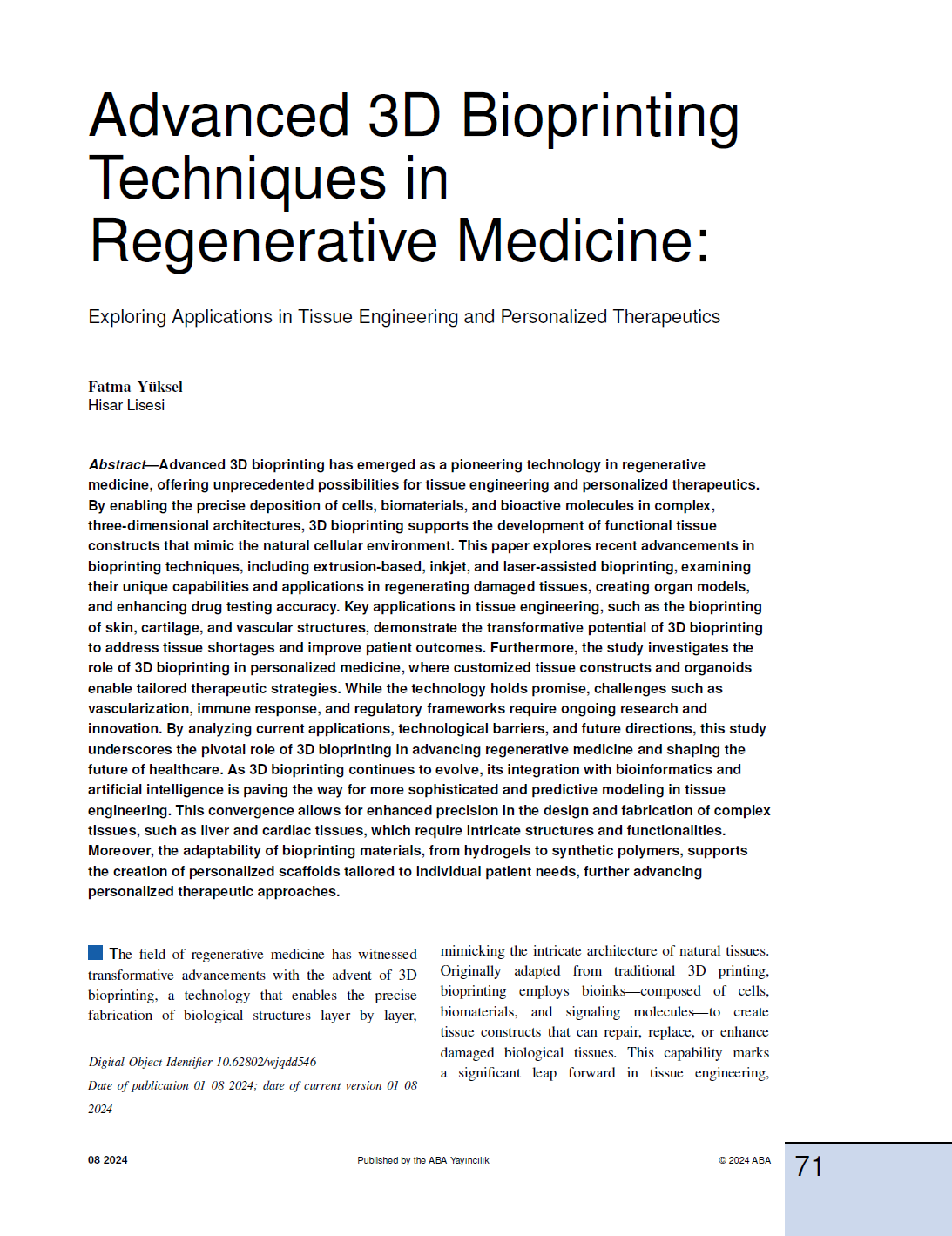Advanced 3D Bioprinting Techniques for Regenerative Medicine: Exploring Applications in Tissue Engineering and Personalized Therapeutics
DOI:
https://doi.org/10.62802/xa2ak830Keywords:
3D Bioprinting, Regenerative Medicine, Tissue Engineering, Personalized Therapeutics, Functional Tissue Constructs, Artificial Intelligence in Bioprinting, Skin BioprintingAbstract
Advanced 3D bioprinting has emerged as a pioneering technology in regenerative medicine, offering unprecedented possibilities for tissue engineering and personalized therapeutics. By enabling the precise deposition of cells, biomaterials, and bioactive molecules in complex, three-dimensional architectures, 3D bioprinting supports the development of functional tissue constructs that mimic the natural cellular environment. This paper explores recent advancements in bioprinting techniques, including extrusion-based, inkjet, and laser-assisted bioprinting, examining their unique capabilities and applications in regenerating damaged tissues, creating organ models, and enhancing drug testing accuracy. Key applications in tissue engineering, such as the bioprinting of skin, cartilage, and vascular structures, demonstrate the transformative potential of 3D bioprinting to address tissue shortages and improve patient outcomes. Furthermore, the study investigates the role of 3D bioprinting in personalized medicine, where customized tissue constructs and organoids enable tailored therapeutic strategies. While the technology holds promise, challenges such as vascularization, immune response, and regulatory frameworks require ongoing research and innovation. By analyzing current applications, technological barriers, and future directions, this study underscores the pivotal role of 3D bioprinting in advancing regenerative medicine and shaping the future of healthcare. As 3D bioprinting continues to evolve, its integration with bioinformatics and artificial intelligence is paving the way for more sophisticated and predictive modeling in tissue engineering. This convergence allows for enhanced precision in the design and fabrication of complex tissues, such as liver and cardiac tissues, which require intricate structures and functionalities. Moreover, the adaptability of bioprinting materials, from hydrogels to synthetic polymers, supports the creation of personalized scaffolds tailored to individual patient needs, further advancing personalized therapeutic approaches.References
Abert, A. (2023). Preparation of bioink for hydrogel printing in additive manufacturing. Malaysian Journal on Composites Science and Manufacturing, 12(1), 43-50. https://doi.org/10.37934/mjcsm.12.1.4350
Mohammadi, S. (2023). Unravelling hierarchical patterning of biomaterial inks with 3d microfluidic-assisted spinning: a paradigm shift in bioprinting technologies. Frontiers in Biomaterials Science, 2. https://doi.org/10.3389/fbiom.2023.1279061
Mohammadrezaei, D., Moghimi, N., Vandvajdi, S., Powathil, G., Hamis, S., & Kohandel, M. (2023). Predicting and elucidating the post-printing behavior of 3d printed cancer cells in hydrogel structures by integrating in-vitro and in-silico experiments. Scientific Reports, 13(1). https://doi.org/10.1038/s41598-023-28286-9
Yi, H., Kim, H., Kwon, J., Choi, Y., Jang, J., & Cho, D. (2021). Application of 3d bioprinting in the prevention and the therapy for human diseases. Signal Transduction and Targeted Therapy, 6(1). https://doi.org/10.1038/s41392-021-00566-8









